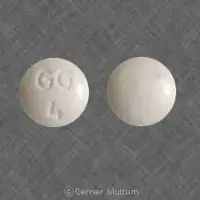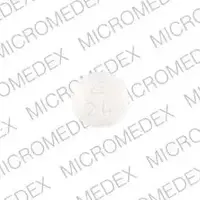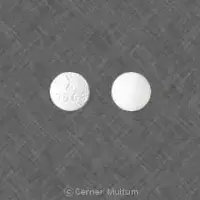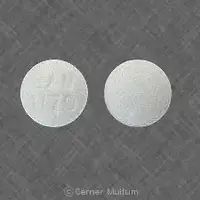Generic name: medically reviewed
Availability: Prescription only
Pregnancy & Lactation: Risk data available
Brand names: Lomotil, Atropine and diphenoxylate
What is Diphenoxylate (monograph)?
Introduction
Antiperistaltic antidiarrhea agent; synthetic phenylpiperidine-derivative opiate agonist.
Uses for Diphenoxylate
Diarrhea
Adjunctive therapy in the management of diarrhea.
Symptomatic treatment of mild or uncomplicated travelers’ diarrhea, including that occurring in adult travelers with HIV infection. Should not be used in travelers with severe diarrhea or with high fever or blood in the stools; these travelers may benefit from short-term treatment with an anti-infective (e.g., a fluoroquinolone).
Ineffective for prevention of travelers’ diarrhea; may increase incidence of travelers’ diarrhea.
Diphenoxylate Dosage and Administration
Administration
Oral Administration
In children 2–12 years of age, administer as oral solution using only the calibrated measuring device provided by the manufacturer.
Do not administer in children <2 years of age because of the narrow range between therapeutic and toxic doses in this age group.
Discontinue if symptoms of travelers’ diarrhea persist >48 hours or worsen.
Dosage
Available as diphenoxylate hydrochloride; dosage expressed in terms of the salt. Commercially available only in combination with atropine sulfate (in subtherapeutic quantity to discourage deliberate overdosage).
Pediatric Patients
Diarrhea
Oral
Children 2–12 years of age: Initially, 0.3–0.4 mg/kg daily, given in 4 divided doses.
|
Age |
Approximate Weight |
Dosage in mg (mL of 2.5-mg/5-mL oral solution) |
|---|---|---|
|
2 years |
11–14 kg |
0.75–1.5 mg (1.5–3 mL) 4 times daily |
|
3 years |
12–16 kg |
1–1.5 mg (2–3 mL) 4 times daily |
|
4 years |
14–20 kg |
1–2 mg (2–4 mL) 4 times daily |
|
5 years |
16–23 kg |
1.25–2.25 mg (2.5–4.5 mL) 4 times daily |
|
6–8 years |
17–32 kg |
1.25–2.5 mg (2.5–5 mL) 4 times daily |
|
9–12 years |
23–55 kg |
1.75–2.5 mg (3.5–5 mL) 4 times daily |
Children 13–16 years of age: Initially, 5 mg 3 times daily.
Pediatric dosage schedules are approximations of an average dosage recommendation; adjust dosage downward according to overall nutritional status and degree of dehydration.
Continue dosage at initial levels until symptoms are controlled and then reduce for maintenance as required; not likely to be effective if no response occurs within 48 hours.
Maintenance dosages may be as low as one-fourth the initial daily dosage.
Adults
Diarrhea
Oral
Initially, 5 mg 4 times daily.
Continue dosage at initial level until symptoms are controlled and then reduce for maintenance as required; not likely to be effective for treatment of acute diarrhea if no response occurs within 48 hours.
Maintenance dosage may be as low as one-fourth (e.g., 5 mg daily) the initial daily dosage.
If clinical improvement of chronic diarrhea after treatment with a maximum daily dosage of 20 mg is not observed within 10 days, symptoms are unlikely to be controlled by further administration.
Prescribing Limits
Do not exceed recommended dosage.
Pediatric Patients
Diarrhea
Oral
Children 2–12 years of age: 0.4 mg/kg daily in divided doses.
Children 13–16 years of age: 5 mg 3 times daily.
Adults
Diarrhea
Oral
20 mg daily in divided doses.
Warnings
Contraindications
-
Known hypersensitivity to diphenoxylate or atropine.
-
Obstructive jaundice.
-
Diarrhea associated with pseudomembranous enterocolitis or enterotoxin-producing bacteria.
Warnings/Precautions
Warnings
Do not use in patients with diarrhea caused by poisoning until the toxic material is eliminated from the GI tract by gastric lavage or cathartics.
Do not use in patients with high fever or blood in stools.
Acute Toxicity
Overdosage may result in severe respiratory depression and coma, possibly leading to permanent brain damage or death. Adhere strictly to dosage recommendations.
Respiratory depression is possible up to 30 hours after ingestion and may recur despite initial response to an opiate antagonist.
MAO Inhibitors
Because diphenoxylate is structurally similar to meperidine, consider the possibility of hypertensive crisis if diphenoxylate and MAO inhibitors are used concomitantly.
Fluid and Electrolyte Replacement Therapy
Appropriate fluid and electrolyte replacement therapy is recommended, when indicated. If severe dehydration or electrolyte imbalance is present, withhold diphenoxylate until appropriate corrective therapy has been initiated.
Drug-induced inhibition of peristalsis may result in fluid retention in the intestine, which may further aggravate dehydration and electrolyte imbalance; may mask fluid and electrolyte depletion in treatment of acute enteritis, especially in young children.
Infectious Diarrhea and Pseudomembranous Enterocolitis
Antiperistaltic agents may prolong and/or worsen diarrhea resulting from some infections (e.g., those caused by Shigella, Salmonella, toxigenic Escherichia coli) and from pseudomembranous enterocolitis associated with broad spectrum antibiotics; do not use in these conditions.
Ulcerative Colitis
Toxic megacolon reported with agents that inhibit intestinal motility or prolong intestinal transit time in some patients with acute ulcerative colitis. Carefully observe patients with acute ulcerative colitis; discontinue promptly if abdominal distention occurs or other adverse symptoms develop.
Hepatic Effects
Hepatic coma reported in patients with cirrhosis. Use with extreme caution in patients with cirrhosis, advanced hepatorenal disease, or abnormal liver function tests results. Contraindicated in patients with jaundice.
General Precautions
Prescribing and Dispensing Errors
Ensure accuracy of prescription; similarity in spelling of Lomotil (fixed combination of diphenoxylate hydrochloride and atropine sulfate) and Lamictal (lamotrigine, an anticonvulsant agent) may result in errors.
Fixed Combination
Commercially available only in combination with atropine sulfate. Consider the cautions, precautions, and contraindications associated with atropine.
Abuse Potential
Evidence of physical dependence not reported with recommended dosages. Possibility of dependence when given in high dosage.
Specific Populations
Pregnancy
Category C.
Lactation
Active metabolite (diphenoxylic acid) may be distributed into milk; atropine is distributed into milk. Drug effects may occur in breast-fed infants. Caution advised if used in nursing women.
Pediatric Use
Not recommended for children <2 years of age. Use particular caution in young children due to greater variability of responses to the drug. Consider nutritional status and degree of dehydration. (See Fluid and Electrolyte Replacement Therapy under Cautions.)
Not recommended for treatment of travelers’ diarrhea in infants, children, or adolescents with HIV infection.
Consider precautions related to use of atropine in children; use with caution since signs of atropinism may occur even at recommended dosages, particularly in patients with Down’s syndrome.
Hepatic Impairment
Use with extreme caution in patients with cirrhosis, advanced hepatorenal disease, or abnormal liver function test results, since hepatic coma may be precipitated. Contraindicated in patients with jaundice.
Common Adverse Effects
Nausea, vomiting, abdominal discomfort or distention, sedation, dizziness, pruritus, anorexia, restlessness or insomnia, confusion, headache.
How should I use Diphenoxylate (monograph)
Administration
Oral Administration
In children 2–12 years of age, administer as oral solution using only the calibrated measuring device provided by the manufacturer.
Do not administer in children <2 years of age because of the narrow range between therapeutic and toxic doses in this age group.
Discontinue if symptoms of travelers’ diarrhea persist >48 hours or worsen.
Dosage
Available as diphenoxylate hydrochloride; dosage expressed in terms of the salt. Commercially available only in combination with atropine sulfate (in subtherapeutic quantity to discourage deliberate overdosage).
Pediatric Patients
Diarrhea
Oral
Children 2–12 years of age: Initially, 0.3–0.4 mg/kg daily, given in 4 divided doses.
|
Age |
Approximate Weight |
Dosage in mg (mL of 2.5-mg/5-mL oral solution) |
|---|---|---|
|
2 years |
11–14 kg |
0.75–1.5 mg (1.5–3 mL) 4 times daily |
|
3 years |
12–16 kg |
1–1.5 mg (2–3 mL) 4 times daily |
|
4 years |
14–20 kg |
1–2 mg (2–4 mL) 4 times daily |
|
5 years |
16–23 kg |
1.25–2.25 mg (2.5–4.5 mL) 4 times daily |
|
6–8 years |
17–32 kg |
1.25–2.5 mg (2.5–5 mL) 4 times daily |
|
9–12 years |
23–55 kg |
1.75–2.5 mg (3.5–5 mL) 4 times daily |
Children 13–16 years of age: Initially, 5 mg 3 times daily.
Pediatric dosage schedules are approximations of an average dosage recommendation; adjust dosage downward according to overall nutritional status and degree of dehydration.
Continue dosage at initial levels until symptoms are controlled and then reduce for maintenance as required; not likely to be effective if no response occurs within 48 hours.
Maintenance dosages may be as low as one-fourth the initial daily dosage.
Adults
Diarrhea
Oral
Initially, 5 mg 4 times daily.
Continue dosage at initial level until symptoms are controlled and then reduce for maintenance as required; not likely to be effective for treatment of acute diarrhea if no response occurs within 48 hours.
Maintenance dosage may be as low as one-fourth (e.g., 5 mg daily) the initial daily dosage.
If clinical improvement of chronic diarrhea after treatment with a maximum daily dosage of 20 mg is not observed within 10 days, symptoms are unlikely to be controlled by further administration.
Prescribing Limits
Do not exceed recommended dosage.
Pediatric Patients
Diarrhea
Oral
Children 2–12 years of age: 0.4 mg/kg daily in divided doses.
Children 13–16 years of age: 5 mg 3 times daily.
Adults
Diarrhea
Oral
20 mg daily in divided doses.
What other drugs will affect Diphenoxylate (monograph)?
Inhibits hepatic microsomal CYP isoenzymes at a dosage of 2 mg/kg daily.
Drugs Metabolized by Hepatic Microsomal Enzymes
Possible pharmacokinetic interaction (increased plasma concentrations of enzyme substrate).
Specific Drugs
|
Drug |
Interaction |
Comments |
|---|---|---|
|
CNS depressants (e.g., alcohol, barbiturates, tranquilizers) |
Increased CNS depression |
Monitor closely if used concomitantly |
|
MAO inhibitors |
Concomitant use theoretically may precipitate hypertensive crisis |







